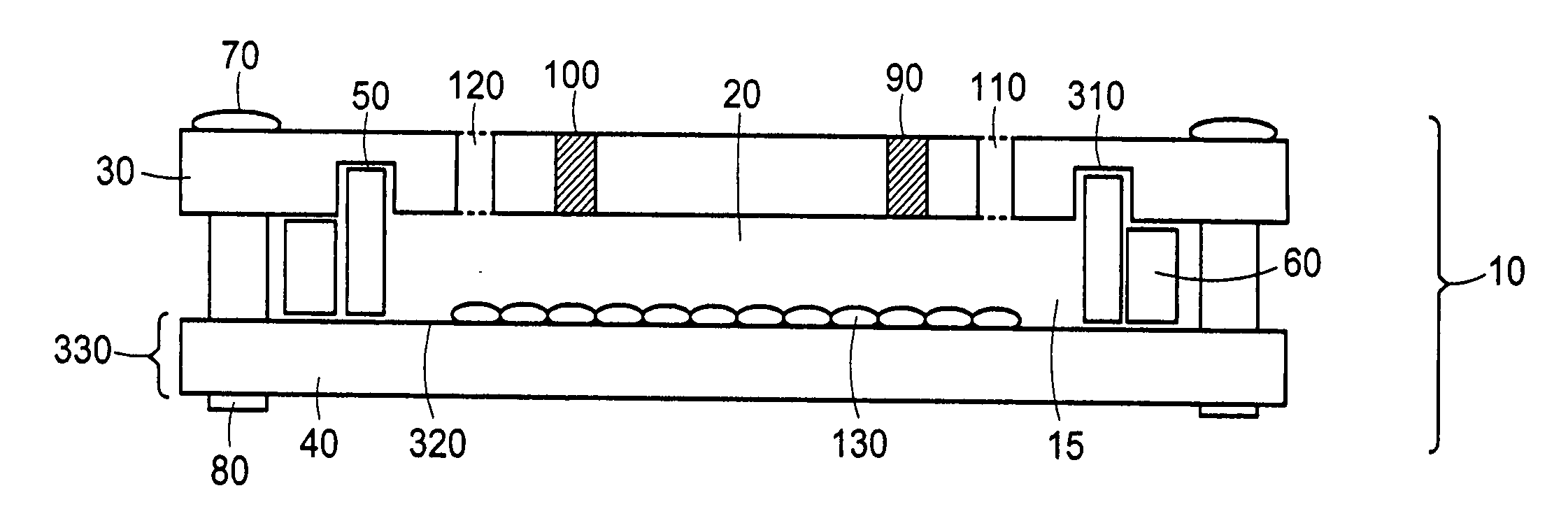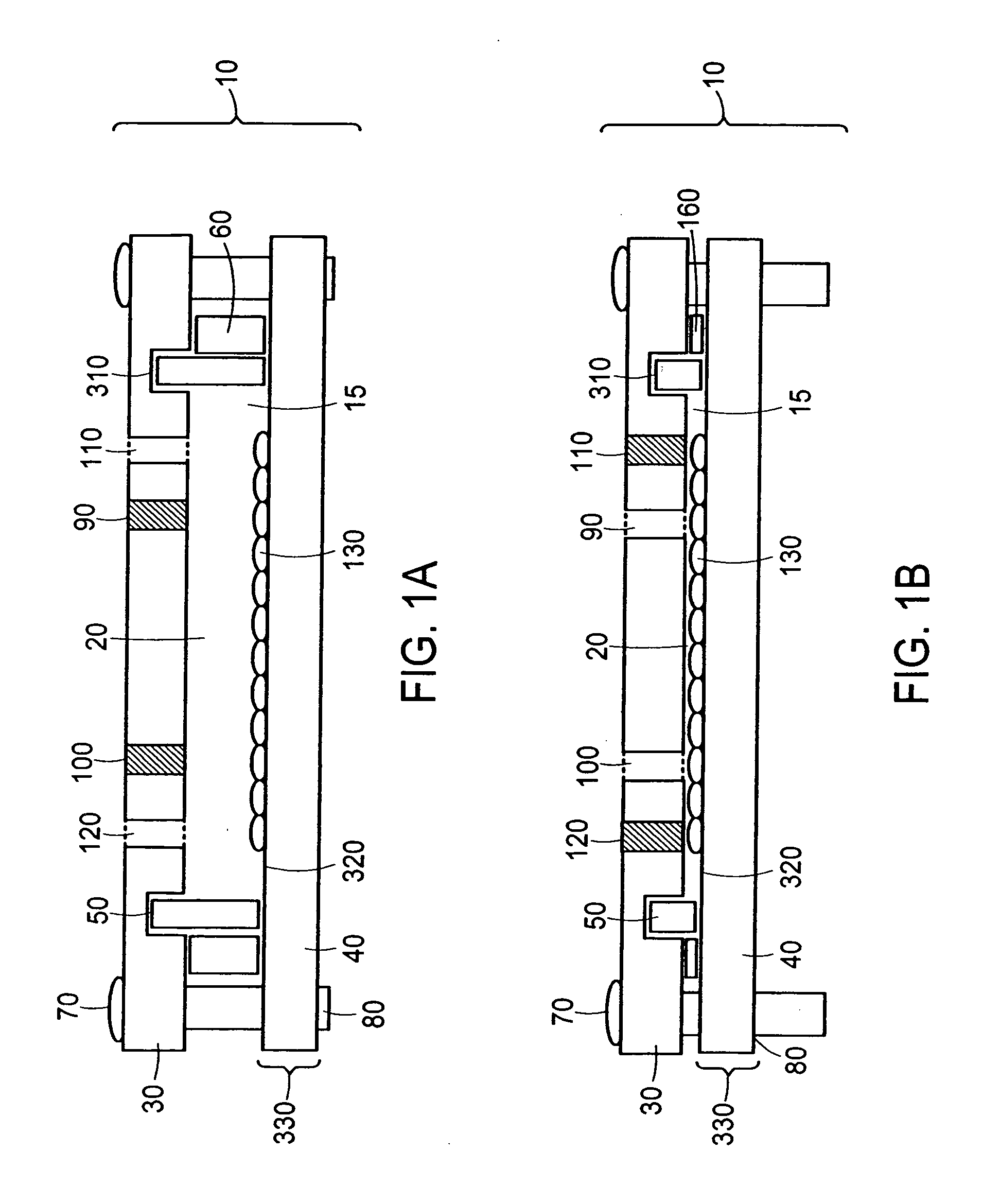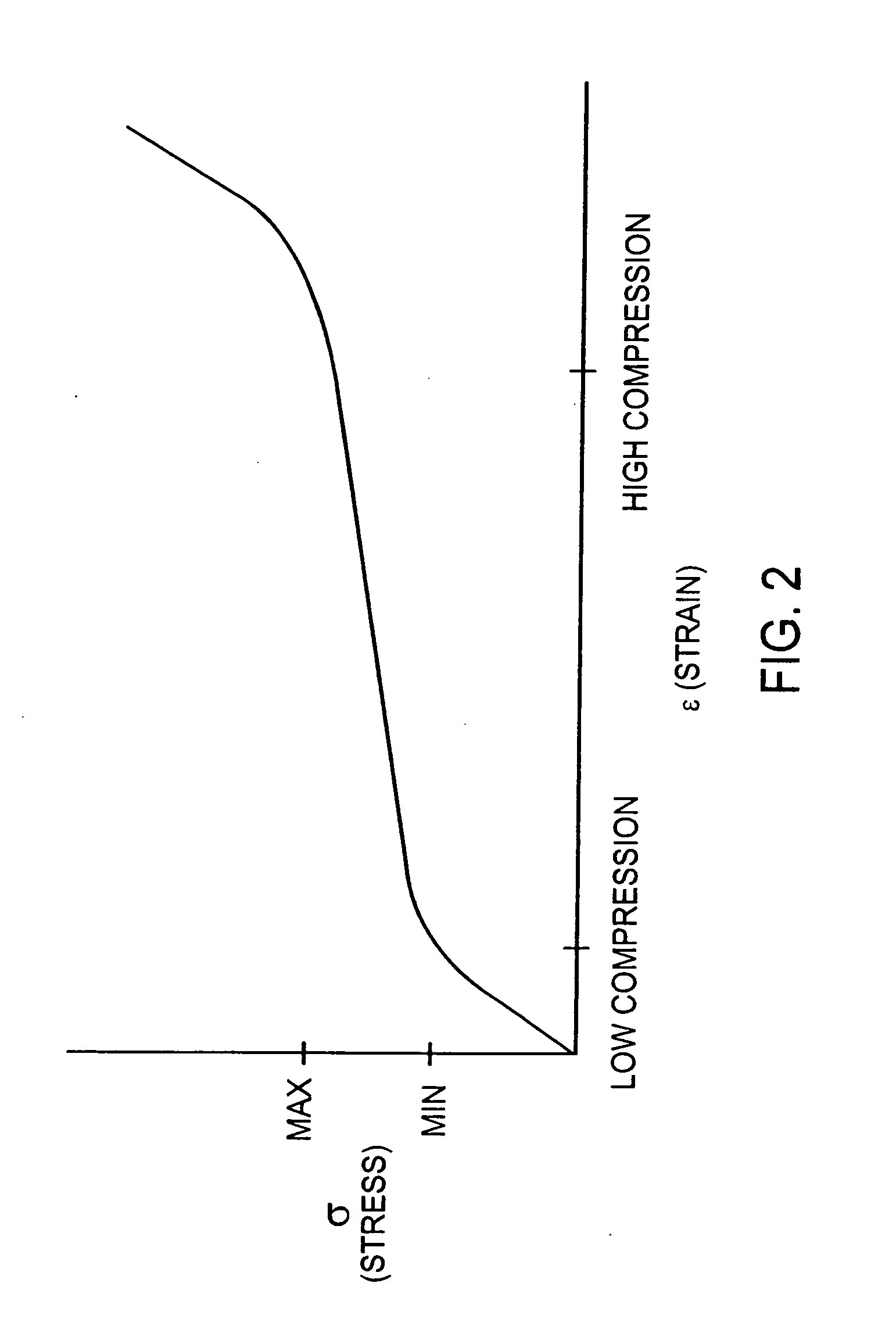Chamber with adjustable volume for cell culture and organ assist
a cell culture and adjustable volume technology, applied in the field of chambers with adjustable volume for cell culture and organ assist, can solve the problems of scaling the performance of cell culture with the increase of the device size, reducing the volume per cell for advantageous cell function, and reducing the volume per cell for growth and concentration of cell-derived products, etc., to achieve small holdup volume, reduce volume, and increase the effect of volum
- Summary
- Abstract
- Description
- Claims
- Application Information
AI Technical Summary
Benefits of technology
Problems solved by technology
Method used
Image
Examples
example 1
Tensioning a Polystyrene Film onto a Perforated Metal Backing
[0144] The ability to attach and tension a thin polymeric film onto a perforated metal frame based on differences in coefficients of thermal expansion between film and frame was demonstrated using a 0.002″-thick film of polystyrene (Polyflex®, Plastics Suppliers, Inc., Columbus, Ohio) and an aluminum frame 40 (depicted in FIG. 8). This film, corona-treated on one side, provides a gas-permeable, liquid-impermeable surface onto which hepatocytes can be seeded, attach, and be cultured, as previously described in International PCT Application Publication No. WO 00 / 78932. The frame was prepared by machining a first set of 2240 0.252″ diameter through-holes 350, spaced 0.272″ diameter-to-diameter apart in a honeycomb-like pattern centered on the 12″×19″ surfaces of a ¼″-thick aluminum jig plate (McMaster-Carr, Bridgeport, N.J.), and a second set of 52 0.252″-diameter through-holes 340 into the same surfaces along their perimete...
example 2
Closed Chamber with Adjustable Volume—Assembly and Seeding with Cells
[0146] The ability of closed chambers with adjustable volume, in which the volumes are set by use of substantially incompressible shims, to be seeded with cells was evaluated by constructing a chamber. The chamber 10, as depicted in FIGS. 9a, 9b, and 9c, comprised an assembly of top plate 30, film-frame assembly 330, compressible gasket 50, substantially incompressible inner shim 180, sets of substantially incompressible outer shims for seeding 60 and for perfusion, associated fittings 410, 440, 450, and 460, and associated components 70, 80, 420, 430, and 470 for fastening the film-frame assembly to the top plate.
[0147] The top plate 30 was a piece of 12″×19″×⅜″-thick aluminum jig plate (McMaster-Carr) machined with a set of 6 types of features and finished with a 0.0005-0.0008″-thick sulfuric anodization, Type II, clear per Mil-A-8625C. A set of 32 0.257″-diameter, ⅜″-deep through-holes 360 matched the set of 3...
example 3
Closed Chamber with Adjustable Volume—Reduction in Volume
[0160] The ability of a cell-seeded chamber to be converted from a seeding configuration containing 165 mL of medium to a perfusion configuration containing 35 ML of medium was demonstrated with the chamber 10 of Example 2 depicted in FIG. 9. The chamber was reconfigured after approximately 18-24 hours of static culture by first removing the chamber from the incubator and placing it in a BSC. Next, plugs 450 for ports 116 and 120 were removed, medium in the chamber aspirated through the now-open port 116, the compartment rinsed to remove nonadherent debris by dispensing and aspirating 50 mL of base culture medium through the port 116, and plugs 450 replaced. The volume of the compartment then was reduced by removing plugs for the perfusion fittings 440, loosening the fasteners 70, removing and replacing the four 0.0625″-thick outer shims 60 with a set of four 0.005″-thick polycarbonate shims, and retightening the fasteners 70...
PUM
| Property | Measurement | Unit |
|---|---|---|
| temperature | aaaaa | aaaaa |
| temperature | aaaaa | aaaaa |
| temperature | aaaaa | aaaaa |
Abstract
Description
Claims
Application Information
 Login to View More
Login to View More - R&D
- Intellectual Property
- Life Sciences
- Materials
- Tech Scout
- Unparalleled Data Quality
- Higher Quality Content
- 60% Fewer Hallucinations
Browse by: Latest US Patents, China's latest patents, Technical Efficacy Thesaurus, Application Domain, Technology Topic, Popular Technical Reports.
© 2025 PatSnap. All rights reserved.Legal|Privacy policy|Modern Slavery Act Transparency Statement|Sitemap|About US| Contact US: help@patsnap.com



